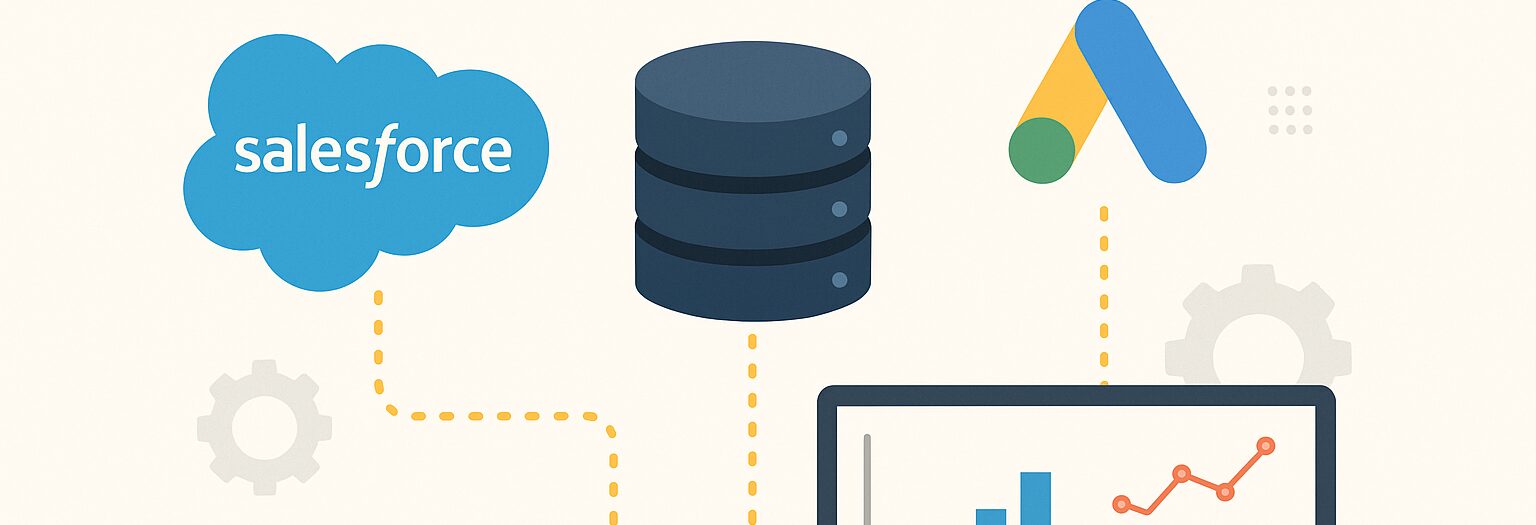In 2024–2025, we continue to see a surprising trend inside RevOps and SalesOps teams:
Some organizations still want to create a brand-new Salesforce Lead record every time a person becomes an MQL — even if that same person already exists as a Contact.
On the surface, this sounds “simple.” It also feels “free” because it uses native Salesforce routing instead of buying something like LeanData.
But teams who have lived through this know the truth:
This approach creates long-term chaos — for reporting, data hygiene, attribution, routing, and Sales productivity.
At RightWave, we work with companies who rely heavily on the Marketo <> Salesforce sync, and the pattern is always the same:
Duplicate-based routing eventually collapses under its own weight.
Below is a breakdown of the risks — and the alternative architecture that consistently produces scalable, healthy databases.
The Hidden Risks of Creating a New Salesforce Lead for Every MQL
1. A Flood of Duplicates — and No Single Source of Truth
If one person becomes an MQL three times in a year, you end up with:
-
1 Contact
-
3–5 duplicate Leads
-
Conflicting routing, ownership, and timestamps
-
Multiple sync candidates battling for dominance during MAP<>CRM sync cycles
In systems with Marketo, this also triggers:
-
Sync conflicts
-
Field overwrites
-
Inaccurate lifecycle reporting
-
Incorrect campaign influence and attribution
Over time, it becomes impossible to answer basic questions like:
“How many real people entered our funnel this quarter?”
“Which MQLs did Sales actually work?”
2. Sales Loses Visibility Into the Actual Customer Journey
When multiple records exist:
-
Some engagement history lives on the Lead
-
Some lives on the Contact
-
Some lives on campaign objects
-
Some lives in Marketo activity logs
Sales reps bounce between multiple versions of the same person.
Context is lost. Follow-ups are duplicated. Real opportunities get missed.
Sales thinks Marketing is “inflating MQLs,”
Marketing thinks Sales is “ignoring leads,” and
RevOps gets stuck mediating.
3. Operations Teams Inherit Endless Administrative Overhead
The “free” solution becomes costly in ways no one anticipated:
-
Frequent duplicate merges
-
Territory reassignments repeated across multiple records
-
Reporting reconciliation across Leads + Contacts + Campaigns
-
New automation to detect when a duplicate Lead should be created
-
Manual troubleshooting when Sales asks, “Why do I see 4 versions of the same person?”
As one expert in the discussion summarized:
“You’ll spend more time maintaining the workaround than the license cost of a routing tool.”
4. Marketo Will Not Behave the Way Salesforce Teams Expect
Marketo always tries to sync to the existing person record (usually the Contact).
To force Marketo to create a duplicate Lead, teams end up building:
-
custom triggers
-
flag fields
-
webhooks
-
Apex automation
-
one-off sync rules
-
exception paths in real-time routing flows
This is brittle, error-prone, and not future-proof.
So What’s the Better Approach?
RightWave recommends a clean model that avoids duplicates entirely:
Use an Inquiry / MQL Event Custom Object Instead of Creating Duplicate Leads
This combines the best of both worlds:
Salesforce-native routing + clean data + full historical tracking.
How It Works
-
Keep the person as a single Lead or Contact
(No duplicates, no sync confusion.) -
Each new MQL creates a new “Inquiry” (or “MQL Event”) record
-
Timestamp
-
Campaign source
-
Product interest
-
Lifecycle stage
-
MQL reason
-
Assigned rep
-
Routing status
-
-
Route at the Inquiry level, not the person level
-
Native Salesforce logic
-
No new tools required
-
No duplicates created
-
-
Sales sees a full timeline of all inquiries
-
One person
-
Many inquiry events
-
Crystal-clear journey tracking
-
Benefits
-
Zero duplicates
-
Accurate pipeline and attribution
-
Full MQL history tied to one person
-
Cleaner dashboards
-
Easier maintenance
-
A structure that scales with growth
This model is also very close to what tools like LeanData, Distribution Engine, and other routing platforms are designed to automate — but can be built natively when budgets are tight.
When a Purpose-Built Routing Tool Is Worth It
While native Salesforce routing can work with the Inquiry Object model, routing tools bring advantages that significantly reduce operational load:
-
Territory changes updated instantly
-
Load balancing & round-robin built-in
-
Auto-handling of complex routing logic
(region + product + segment + partner status + SDR team capacity) -
Routing health dashboards
-
Error prevention and real-time alerts
For orgs with frequent territory updates, multiple product lines, or high lead volumes, routing tools almost always deliver lower total cost of ownership than maintaining native automation.
RightWave’s Recommendation for 2025 MOPS Teams
If you are evaluating a Salesforce-native routing design, here’s the RightWave POV:
❌ Never create a new Lead for every MQL.
✔️ Always maintain a single person record.
✔️ Track every MQL as a separate inquiry event — not a duplicate Lead.
✔️ Adopt a clean, scalable data model that supports cross-platform attribution, accurate reporting, and Sales efficiency.
✔️ Consider a routing platform when complexity grows — the ROI is almost always positive.
Final Word: Clean Architecture Always Wins
The debate often sounds like this:
“Salesforce routing is free. Why buy another tool?”
But the truth is:
-
Free is not free.
-
Duplicates are never harmless.
-
Data architecture decisions compound over time.
Marketing Ops teams end up paying the cost — in daily sync conflicts, reporting gaps, and administrative burden.
A clean object model costs nothing.
Duplicate-based routing costs everything.
RightWave helps companies design MOPS foundations that don’t collapse under scale — including Salesforce routing, Marketo sync architecture, lifecycle frameworks, and data governance models that last for years.



